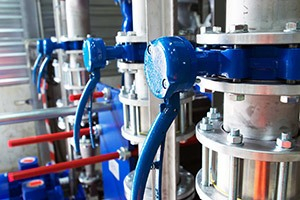- Krisztina Borsos
- Responsive
- Posted by
Desired outcome
The auxiliary chemicals widely used in the water and wastewater treatment industries are iron-based coagulants and chlorine-based disinfectants. The procurement and storage of dosing materials face challenges in less well-supplied areas of the global world. As a result, high-value treatment systems deployed in these regions often operate poorly or not at all.
Initial Problem Description
The developed technology utilizes readily available and inexpensive materials that can be accessed anywhere in the world. Their transportation and storage do not require specialized handling or tools. These two "everyday" materials are common salt (table salt) and steel (rod or sheet).
With the use of these two commonplace ingredients, we aim to produce high-efficiency treatment chemicals in situ, including: Chlorine gas or hypochlorite solution; Sodium ferrate solution; Iron chloride solution.
Context
The primary operations of the developed technology are as follows:
1. Membrane electrolysis of NaCl solution: Aimed at producing NaOH solution and chlorine gas.
2. Electrolysis of NaOH solution with iron electrodes: Intended for the production of sodium ferrate.
3. Electrolysis of NaCl solution for the production of iron chloride solution.
Connection to cross-cutting areas
The procurement and storage of dosing materials face challenges in less well-supplied areas of the global world. As a result, high-value treatment systems deployed in these regions often operate poorly or not at all. The primary intention of the technical technological development was to address this issue, but achieving a drastic reduction in treatment costs is also of paramount importance.
Input
Practical Application Example:
Producing drinking water from surface water using a container-installed system.
The untreated surface water is initially treated with the addition of iron chloride and then sodium ferrate. The formed Fe(OH)3 precipitate is decanted and filtered, and the treated water is stabilized by adding chlorine. The coagulation process removes the majority of colloids and other suspended matter. Sodium ferrate, as an extremely strong oxidizing agent, oxidizes inorganic pollutants, breaks down organic matter, aids in the "mineralization" of inorganic pollutants, and destroys a wide spectrum of microbial organisms. Chlorine ensures the microbiological stability of the purified water. Due to the effective pretreatment, there is no need to maintain high chlorine concentrations, and the formation of chlorinated by-products is minimal.
Expectations
Development tasks:
Membrane electrolysis of NaCl solution is considered a standard technology today. For the purpose of producing ferrate products, the electrolysis of alkaline solution with iron electrodes is also a practiced method. (Hidrofilt Ltd. has built such a mobile device in collaboration with Imsys Ltd.)
Currently, there is no available technical solution for separating the ferrate product from the electrolyte solution, which would allow continuous production and dosage. The ambitious goal of the development is to work out the procedure for this.
(The established practice of ferrate separation is based on crystallization using the difference in solubility between K and Na ferrate.)
Furthermore, the development work includes optimizing technological parameters, developing and monitoring measurement techniques necessary for process control, assessing the material and energy requirements for product production, estimating device lifespan, and performing other fundamental tasks in technological planning.
Desired Team Profile
For research work, a university degree is recommended, such as a chemical engineer, chemist, or bioengineer, with a bachelor's, master's, PhD degree, or currently enrolled in a doctoral program. We expect precision and perseverance from the applicant. Upon request, Hidrofilt Ltd can provide professional assistance.
Additional Information
Economic calculations:
1. Regarding the production cost of the chemicals.
2. Concerning the investment cost of the equipment implementing the technology.
Error analysis:
Exploration and prevention of potential failure possibilities.
If a novel solution is developed, prepare intellectual property protection documentation.
Related Keywords
About Krisztina Borsos
HIDROFILT Ltd. was founded in 1990 by Hungarian experts to offer high quality services in water and industrial wastewater treatment. Founders (current owners) were employees of the former state owned Nagykanizsa Fine-mechanical Company and its successors. This company was appointed as a manufacturer and supplier of small and medium scale water and industrial wastewater plants for Eastern Europe. There were 1600 people working in that plant out of which 280 people had been involved in the design and manufacture of water treatment plants. Technical background and skills of the owners and most of the fellow workers of Hidrofilt Ltd. had been established there.

You need to sign up to apply to this challenge and submit a motivation letter!

Learn more about the topics and find team members!
Help
Need help submitting your proposal or have questions regarding this Open Innovation Challenge?
Contact support
